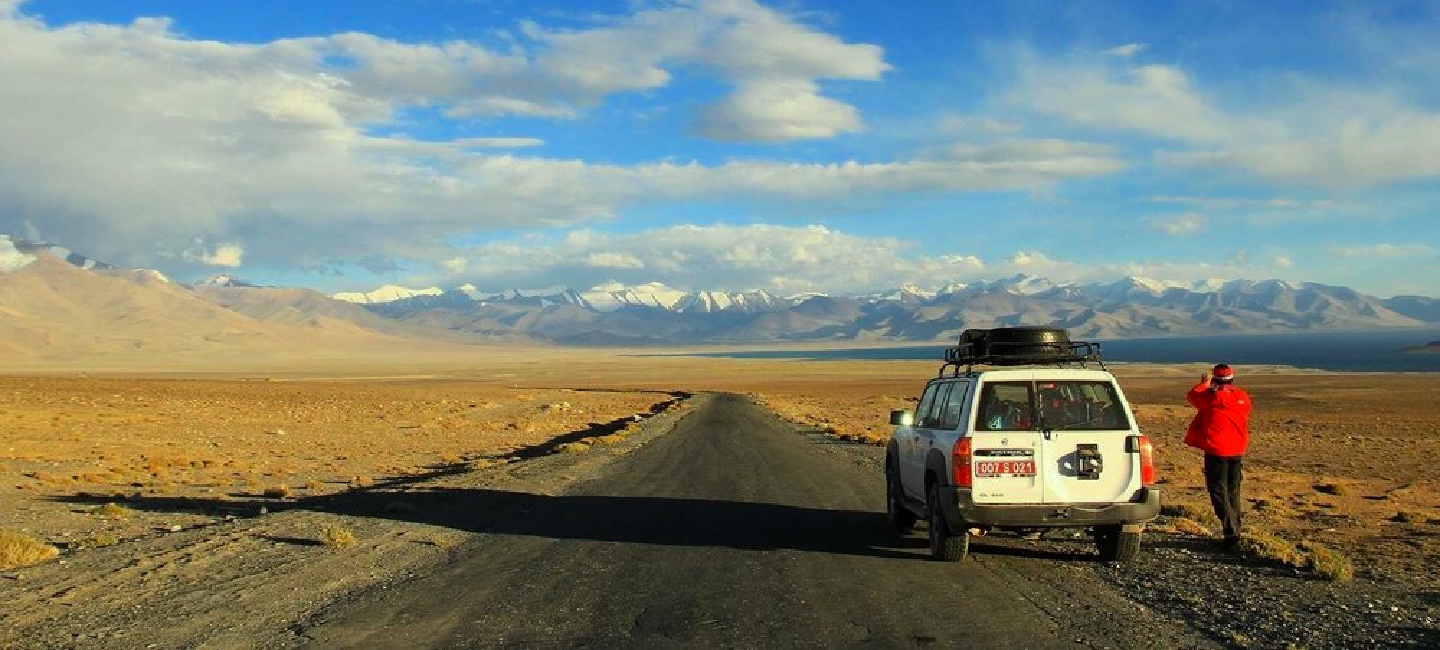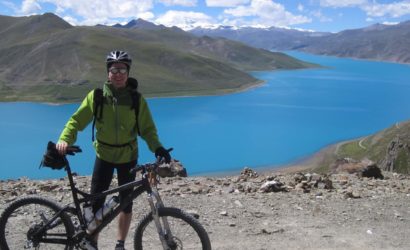Tibet overland tour is a beautiful journey to Tibet. Drive in and fly out tour through a circular route from Kathmandu to Lhasa in the heart of Tibet, offers you some of the most amazing landscapes on Earth creating a real adventure trip for travelers on a limit of time and Money.
Our 8-day Tibet Overland tour via Kerung is one of the popular travel itineraries in Tibet. The approx. 1000Km friendship highway between Lhasa and Kathmandu in Nepal is a classic overland journey and easily the most popular travelers’ route.
The trip starts from Kathmandu and drives through the Rasuwagadi Kerung route (150KM). After finishing the border formalities at Kerung border crossing; you will be met by Tibetan guide and proceed your trip to Tibet officially. The 7 nights 8 days Kathmandu to Tibet Overland tour goes thorough Tingri County with a wonderful view of Mt. Cho oyu. A drive to Shigatse and visit of impressive Tashilhunpo Monastery and Khumbum and Phalkhor monasteries in Gyantse will take your breath away. From Gyantse you can head straight to the coiling scorpion-lake of Yamdrok-tso.
The Lhasa sightseeing for two days give you another impression of Tibet. There’s enough to see in and around Lhasa; Highlights includes the Potala Palace (a UNESCO World Heritage Site), the Jokhang Temple and the Barkhor Pilgrimage circuit. The huge monastic institutions of Drepung and Sera lie on the edge of town.
Tibet emerged as an unified kingdom in the 7th century, but it soon split into separate territories. The air is extremely dry nine months a year, and because of the rain shadow effect, average annual snowfall is only 15 to 20 inches. Every year, Western passes receive small quantities of fresh snow but remain traversable throughout the year. Low temperatures are prevalent throughout these western regions, where any vegetation beyond the size of low bushes is unrelieved by bleak desolation, and where wind sweeps unchecked across vast arid plains.
To eastern Tibet, the Indian monsoon exerts some influence. Northern Tibet experiences high summer temperatures and extreme winter cold.
Upon your arrival in the Kathmandu airport after completing your custom formalities Visa, etc. pick up your luggage and look for our airport representative from Himalaya Discovery, who will display your name on the board at the arrival gate. You will be greeted by our representative and transferred to your hotel by private tourist vehicle. Overnight in Kathmandu.
Early in the morning scenic drive to Kerung border Nepal Tibet border through the beautiful Nepalese countryside and after necessary border formalities at Nepali immigration and cross the bridge process for all necessary formalities in Chinese immigration continue to drive to Kerung town. Overnight at Guesthouse.
After breakfast drive uphill to the height plateau of the world with the typical view of Tibetan landscape offering sheer feeling of standing of the roof of the world from where weather permitting, breathtaking panorama of beautiful Himalayan ranges including Mt. Cho Oyu (8,201m) and Mt.Xishapangma (8,012m) but dwarfed by the vastness of the Tibetan plateau.
From Tingri one can enjoy the magnificence of Mt. Everest (8,848m). Overnight at Guesthouse.
After breakfast continue to drive scenic crossing over Gyatchu La(5,220m), the highest pass en route to Lhasa via Lhatse from where a road to Mt.Kailash Bifurcates to the west. Overnight at a hotel.
After breakfast morning sightseeing to the Panchen Lama’s Tashilhumpu Monastery. Drive to Gyantse and visit Kumbum Stupa and Phalkhor monastery. Overnight at a hotel.
After breakfast full day picturesque drive crossing over Karola(5,010m), Kambala (4,749m), colorful Yamdrok-tso Lake and the Tibetan lifeline river Brahma Putra (Yarlung Tsangpo). Overnight at a hotel.
After breakfast Two full days sightseeing tour to Lhasa including Jokhang Temple, Barkhor Bazar, Potala Palace, Drepung and Sera Monasteries.
You experience invaluable insights during your visits to Potala Palace and Drepung Monastery. This 17th century Potala Palace offers an awesome view of entire city and also has private quarters of the Dalai Lama, numerous grand state rooms, and chapels.
Ancient history has it that Drepung Monastery which was built in the 14th century used to shelter around 10,000 monks but as now there has been quite a declination resulting in only a hundred. Overnight at a hotel.
After breakfast drive to Gonggar Airport or train station for your departure flight to Kathmandu or to your onward destination.
The trip concludes! Our airport representative will drop you to the airport for your flight departure from Nepal.






